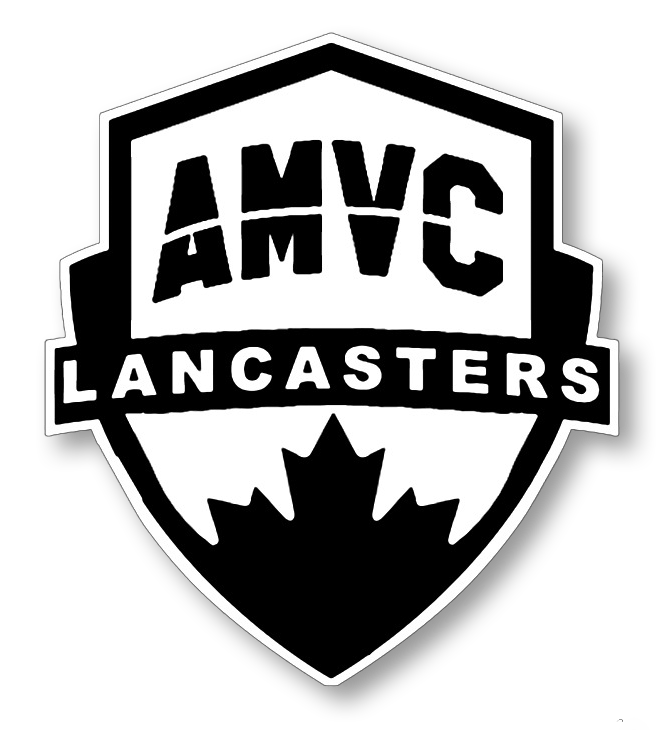History
November 3, 2022
Andrew Charles Mynarski was born in Winnipeg, Manitoba, on the 14th of October 1916, the son of Polish immigrants. He was educated at King Edward and Isaac Newton Elementary Schools and at St. John’s Technical School. To help support his family after his father’s death, he worked for four years as a leather worker in Winnipeg. In November 1941 he enlisted in the Royal Canadian Air Force. He took his training at Calgary and Edmonton, Alberta, and MacDonald, Manitoba, graduating in 1942 as a mid-upper air-gunner. He went overseas in December 1942. He is buried in Méharicourt Cemetery, Méharicourt, France. Pilot Officer Mynarski was the first member of the RCAF to be decorated with the Victoria Cross in the Second World War. His Victoria Cross is on display at the Air Command Headquarters in Winnipeg.
Citation
“Pilot Officer Mynarski was the mid-upper gunner of a Lancaster aircraft, detailed to attack a target at Cambrai in France, on the night of 12th June 1944. The aircraft was attacked from below and astern by an enemy fighter and ultimately came down in flames.
As an immediate result of the attack, both port engines failed. Fire broke out between the mid-upper turret and the rear turret, as well as in the port wing. The flames soon became fierce and the captain ordered the crew to abandon the aircraft.
Pilot Officer Mynarski left his turret and went toward the escape hatch. He then saw that the rear gunner was still in his turret and apparently unable to leave it. The turret was, in fact, immovable, since the hydraulic gear had been put out of action when the port engines failed, and the manual gear had been broken by the gunner in his attempts to escape.
Without hesitation, Pilot Officer Mynarski made his way through the flames in an endeavour to reach the rear turret and release the gunner. Whilst so doing, his parachute and his clothing, up to the waist, were set on fire. All his efforts to move the turret and free the gunner were in vain. Eventually the rear gunner clearly indicated to him that there was nothing more he could do and that he should try to save his own life. Pilot Officer Mynarski reluctantly went back through the flames to the escape hatch. There, as a last gesture to the trapped gunner, he turned toward him, stood to attention in his flaming clothing and saluted, before he jumped out of the aircraft. Pilot Officer Mynarski’s descent was seen by French people on the ground. Both his parachute and his clothing were on fire. He was found eventually by the French, but was so severely burned that he died from his injuries.
The rear gunner had a miraculous escape when the aircraft crashed. He subsequently testified that, had Pilot Officer Mynarski not attempted to save his comrade’s life, he could have left the aircraft in safety and would, doubtless, have escaped death.
Pilot Officer Mynarski must have been fully aware that in trying to free the rear gunner he was almost certain to lose his own life. Despite this, with outstanding courage and complete disregard for his own safety, he went to the rescue. Willingly accepting the danger, Pilot Officer Mynarski lost his life by a most conspicuous act of heroism which called for valour of the highest order.”
The London Gazette, 11th October 1946
History
In keeping with their school's namesake who fought for the freedoms enjoyed by Canadians, students at Andrew Mynarski V. C. School made a colourful statement about human rights with a massive art installation on their school grounds. Students tied coloured ribbons to the school's exterior fence each day of the week to mark Everybody has the Right, a WSD celebration of human rights. Each day, students tied different ribbons: blue ribbons to represent antiracism, diversity and equity, white ribbons to represent inclusion, pink ribbons to represent anti-bullying and anti-homophobia. The week concluded with red ribbons to celebrate Indigenous culture. Students wrote on a ribbon each day, sharing their thoughts on human rights. The Life Skills Centre and Learning Assistance Centre at AMVC are two WSD programs that support students in developing proficiencies in academic and life long endeavours. AMVC's proactive approach tracks English as an Additional Language learners, students in care, Indigenous students and students with social/emotional needs to ensure all requirements are met. AMVC also initiated a "Response to Intervention" strategy to support students social and emotional needs.


